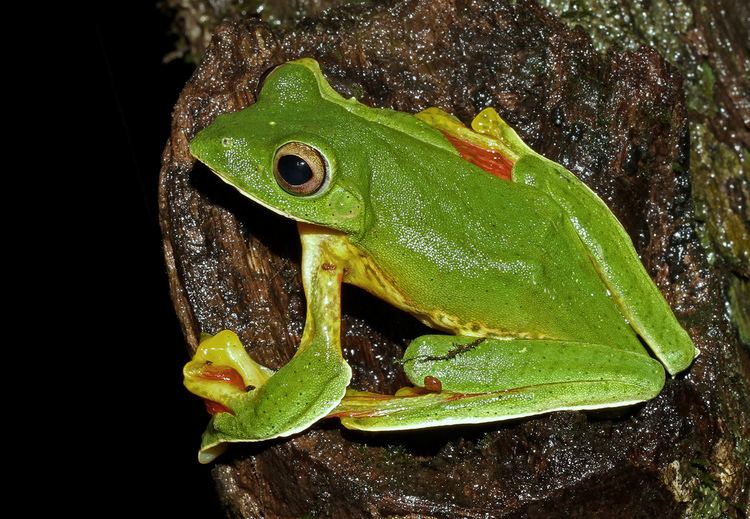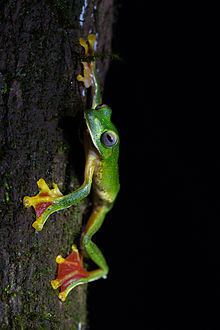Subphylum Vertebrata Order Anura Rank Species | Phylum Chordata Subclass Lissamphibia Suborder Neobatrachia Higher classification Rhacophorus | |
 | ||
Similar Frog, Rhacophorus, Amphibians, Wallace's flying frog, Troschel's tree frog | ||
Malabar gliding frog rhacophorus malabaricus female after completion of her nest
The Malabar gliding frog or Malabar flying frog (Rhacophorus malabaricus) is a Rhacophorid tree frog species found in the Western Ghats of India.
Contents
- Malabar gliding frog rhacophorus malabaricus female after completion of her nest
- Mating in the bushes false malabar gliding frog rhacophorus pseudomalabaricus building nest
- Behavior
- Description
- Reproduction
- References

Mating in the bushes false malabar gliding frog rhacophorus pseudomalabaricus building nest
Behavior

The term "gliding" frog refers to its ability to break its fall by stretching the webbing between its toes when making leaps down from the treetops. It can make gliding jumps of 9–12 m, a maximum of about 115 times its length.
Description

This frog has a body length of about 10 cm (4 in), making it one of the largest moss frogs. Males are smaller than females. Its back skin is finely granulated and the color is vivid green without markings, distinguishing it from the otherwise quite similar R. pseudomalabaricus, which has a black-marbled back and was long included in the present species. In preserved specimens, the back turns purplish blue. The belly is more coarsely granulated – particularly under the thighs – and pale yellow. There are skin fringes between and along the long limbs, and a triangular skin extension at the heel. The webbing between fingers and toes is large and orange-red.
The vomerine teeth are arranged in two straight or slightly oblique series touching the inner front edge of the choanae. The snout is rounded but not very wide, about as long as the diameter of the orbit, the canthus rostralis is bluntly-angled, and the loral region is concave. The nostrils are located nearer to the end of the snout than to the eyes. The interorbital space is broader than the upper eyelid. The tympanum measures about 60–70% of the diameter of the eye.

The disks of fingers and toes are large, about the size of the tympanum; the subarticular tubercles are well-developed, also. The tibio-tarsal articulation reaches at least to the eye, at most top the nostril.
Reproduction
Like many moss frogs, they build foam nests above small pools of water, into which the tadpoles drop after hatching.
